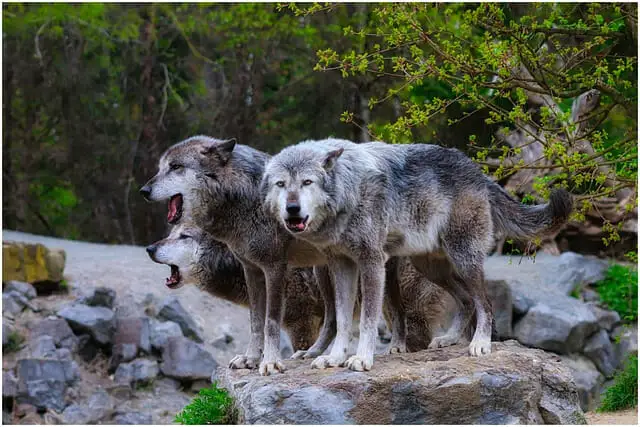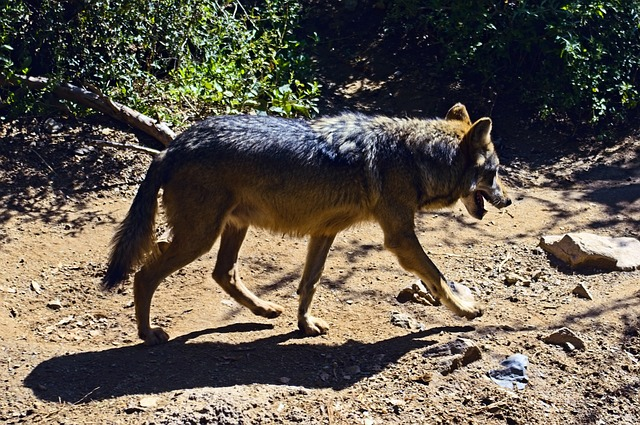Wolves have long been a symbol of the wilderness, with their unique howls and majestic presence. However, their population has diminished over the years due to hunting, habitat loss, and many other factors.

Despite decades of conservation efforts, many people are still curious about the wolf population. There is no simple answer to their complex query. While some wolf populations have regained and held the status of near threatened in the red list of IUNC.
But yet, there are many concerns people have regarding these top predators of biodiversity. So in this blog, we will explore the gray wolf population, their sufferings for survival, and how this species recovered in different regions.
Does Gray Wolf’s delisting from Federal Endangered Species Act protections affect them?
In 2011, Congress ended federal protection in the northern Rockies, and in 2020 the Trump administration stripped the wolves protection act. Anti-wolf and extremists have been on the offensive ever since.
The consequences of lifting the protection act from the wolves were so horrible. After it, the hunters, with their dogs, hunted around 218 wolves within three days.
In response to this brutality, in 2020, nearly 1.8 million Americans protested against the delisting of wolves from the protection act.
Fish and Wildlife Service’s Role in Protecting Gray Wolves
The Fish and Wildlife Service (FWS) has played a significant role in protecting gray wolves in the United States. Gray wolves were once widespread throughout North America, but their numbers declined drastically due to hunting and habitat loss.
In 1978, gray wolves were listed as endangered under the Endangered Species Act, and the FWS has been responsible for their recovery till that time.
The agency has implemented conservation programs, monitored wolf populations, and worked with local communities to manage wolf-population. In recent years, the FWS has proposed to remove gray wolves from the endangered species list, which has sparked controversy and debate.
But the FWS took back its decision after backlash from scientists, businesses, veterinary professionals, and wildlife supporters.
Wolf Populations in the Great Lakes Region and Northern Rockies Region
The Great Lakes region and the Northern Rockies region are home to significant wolf populations in the United States. In the Great Lakes region, wolves were once near extinction but have made a remarkable comeback due to continuous conservation efforts.
Today, there are an estimated 3,700 in the Great Lakes region, 4,000 wolves in the area, 7,000 to 11,200 gray wolves in Alaska, 1,675 in the Northern Rockies, and 275 in the Pacific Northwest.
In the Northern Rockies region, wolves were reintroduced in the mid-1990s after being excessively hunted. Presently, there are over f 1,657 wolves in the area, primarily in Montana, Idaho, and Wyoming.
Wolves require large areas of contiguous habitat, including forests and mountainous terrain, with access to prey, protection from extreme persecution, and areas for denning and shelter.
While both regions have seen successfully recovered wolves, they continue to face threats from hunting and habitat loss, making ongoing conservation efforts critical to their survival.
Gray Wolves regained but still need more Efforts for recovery
After getting official protection, wolves recovered a massive number in the western great lakes region. The population of this species increased and became widespread across Wisconsin and Michigan.
After naturally migrating from Canada and a reintroduction to Yellowstone National Park and central Idaho, the gray wolf species inhabited the northern Rockies once again and are flourishing in the West Coast states.
Regaining Efforts for Mexican Gray Wolves in the Northern and Southwestern
The Mexican gray wolf, also known as the Lobo, is a highly endangered subspecies of gray wolf that once roamed and was found throughout the southwestern United States and northern Mexico. Due to habitat loss, hunting, and the legal predator control act, the Lobo population was badly affected.

During 1977 and 1980, some remaining wolves were captured for breeding. After breeding, their few pups were left in Arizona and New Mexico to increase their population.
However, through intensive captive breeding and reintroduction efforts, the population has slowly increased to around 196 individuals in the wild as of 2021.
Despite this progress, the Lobo remains one of the rarest and most genetically distinct subspecies of the gray wolves in the world, and continued conservation efforts are yet needed to ensure the survival of this species.
Why is Wolf Conservation Important for Biodiversity?
Wolf conservation is crucial for maintaining biodiversity in ecosystems. Wolves play a key role in balancing the food chain, as they are apex predators that regulate populations of prey species.
Without wolves, herbivores can overgraze and cause vegetation loss, impacting other wild animals that depend on these plants for food and shelter.
In addition, wolves indirectly benefit scavengers and predators that feed on their kills, contributing to a healthy ecosystem. Therefore protecting wolf species is critical for the preservation of biodiversity.
Conclusion
The conservation status of gray wolves in the United States remains a topic of debate and concern. While they have made a remarkable recovery since their near-extinction in the early 20th century.
Further, their delisting from the Endangered Species Act in 2020 has raised questions about their long-term survival.
With continued efforts to protect and manage their populations, gray wolves can thrive in their natural habitats and provide important ecological benefits. It is all up to us to stay informed about their status.
Frequently Asked Questions:
How many wolves will be left in the world in 2023?
It is estimated that there are approximately 250,000 wolves globally, with the majority residing in Russia, Canada, and Alaska.
How close are wolves to extinction?
Wolves were on the brink of extinction in the United States in the mid-20th century, with only a few hundred remaining in remote areas. But after restoration, the population is around 17,780 in the U.S.
Do wolves need to be protected?
Yes, they do. According to many conservationists and scientists, gray wolves still need protection.
Are wolves still being hunted?
Yes, wolves are still being hunted in some areas for various reasons, including population control and livestock management. However, hunting regulations and conservation efforts are in place to ensure sustainable wolf populations.
What is the Endangered Species List?
The Endangered Species List is a register maintained by the U.S. government of species at risk of extinction due to habitat loss, hunting, pollution, or other factors.








